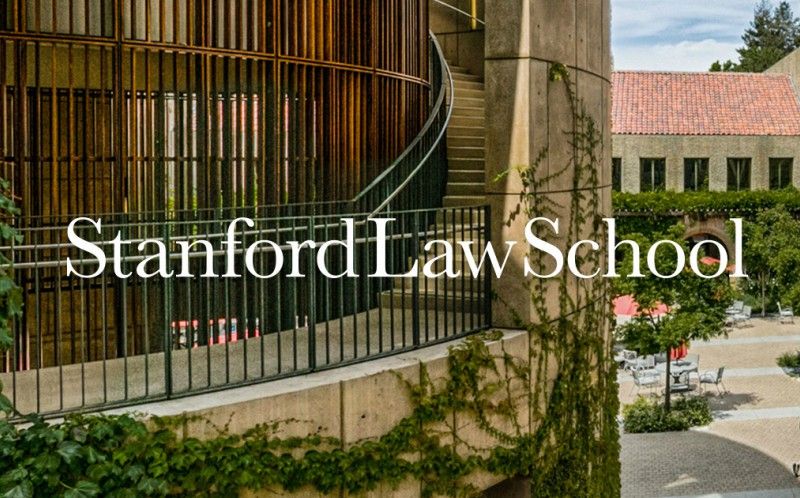
Summary: There was something special about Stanford Law’s class of 1998 because it now has three female members that have gone on to be deans at major law schools.
It is not surprising that Stanford Law School, an elite law school, is really good at producing women that take on roles as deans at top law schools. Their 1998 class has done exceptionally well at spitting out highly qualified and powerful women. The class of ’98 is set to have three deans at top law schools, according to Law.com.
Northwestern University Pritzker School of Law is welcoming Kimberly Yuracko and Duke Law School will have Kerry Abrams assuming the position as dean in July. Both received their Juris Doctors from Stanford in 1998. Columbia Law School’s dean, Gillian Lester, technically defended her dissertation in 1998 even though she was working towards her Doctor of Science of Law from 1992 to 1993. Lester taught at the University of California Los Angeles School of Law between 1993 and 1998.
Stanford professor Mark Kelman, who is noted by all three as being a mentor to them, said, “We’re very proud that three people who did a lot of their training here are now going to be trying to sustain and improve the legal education at three great institutions. Columbia, Duke and Northwestern are great law schools, and they will shepherd them forward.”
The three admit that they didn’t know each other as students but have turned to each other now for professional inspiration and support. Yuracko said, “Gillian gave me tremendous help and mentorship when I started out in law teaching, and I tried to be helpful to Kerry when she was on the entry-level market a few years after me. It is a really nice group and a very nice connection to Stanford.”
Abrams added, “Gillian’s book with Kelman [“Jumping the Queue: An Inquiry into the Legal Treatment of Students with Learning Disabilities”] came out when I was a law student. It was inspirational to me to see someone publishing with one of my favorite professors. It was one of the things that made me think, ‘Maybe I can do this.’”
Lester explained that Kelman told her about Yuracko early on in her career. “My first awareness that she had come on the scene as a new scholar happened because we shared a mentor at Stanford. It was through Mark Kelman that I started to learn about and read her work. The Stanford connection definitely forged a link between Kim and me early in our careers.”
Kelman’s connection with Yuracko began before Stanford. He tutored her when she was a junior at the University of Oxford. His connection with Abram started when she took his property course. “He was the person who convinced me to stick with law school when I had doubts. And he was one of the people I went to years later when I was thinking about moving back to academia, to ask his advice.”
Lester says she knew before law school that she wanted to teach. She took a seminar co-taught by then-Dean Paul Brest and former professor Peggy Radin to help students work towards becoming law professors. “We would usually meet at Peggy’s home, which was very welcoming. And we would put together papers that would later become possible job talk papers. We had to teach classes – we had to lead the seminar on different topics. We got exposure to what it is to run a class and what kinds of things we needed to start thinking about to have the necessary presentation skills for an academic context.” Kelman does not like taking credit for the trio’s success. He claims he just saw their potential and helped them harness it. He said, “What made them so much fun to work with as a teacher is precisely what other people are noticing now and making them deans. I didn’t cause it. I noticed it. They were really intellectually energetic, exciting, thoughtful people.”
Kester also credits Stanford’s gender climate as playing a role in the trio’s success. He said, “It’s not surprising that women just before the turn of the millennium coming out of Stanford had high levels of confidence and high expectations. Beginning in the mid-80s, I think this was a school where women were not just present but were held in high esteem and had positions of social power. I think they were coming out of an environment in which both expectations for and respect for women academics was in the air. I think it was in the air here earlier than it was I some other places. I think that probably helped.”
Now name partner Kathleen Sullivan at Quinn Emanuel Urquhart & Sullivan would become Stanford Law’s dean the year after the three graduated.
Do you think having a mentor plays a large part in one’s success? Share your thoughts with us in the comments below.
To learn more about the three, read these articles:
- Northwestern Pritzker School of Law Welcomes New Dean
- Gillian Lester Appointed Dean of Columbia Law Effective January 1, 2015
- Duke Law Names New Dean
Photo: law.stanford.edu
